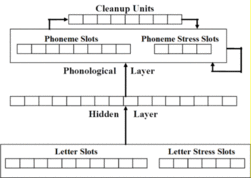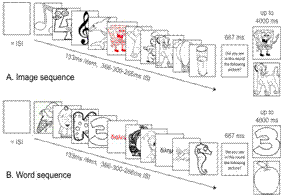
Artificial neural networks learn to map letter sequences to phoneme sequences, simulating the development of word recognition. In our studies, we examine connectionist architectures and compare them with alternative approaches to “dual-path” computational models. The evaluation data for the models come from behavioral studies of word recognition and reading, in which we estimate the effects of different parameters on response time and accuracy. The parameter values are estimated from large text corpora using text-processing techniques.

Neuroimaging: Current theories of word recognition assume the existence of distinct functional units of cognition, with specific inputs, outputs, and interactions. Recently, attempts have been made to map these units to brain regions, thus searching for the “functional architecture” of the “reading network.” Because different units are theoretically influenced by different properties of words, we can attempt to locate these units by searching for the brain regions that respond to these properties. To this end, in our studies we present written words and pseudowords and analyze the selective response of brain regions to the critical properties of the theories.

Implicit orthographic learning: Familiarity with written words is essential for easy recognition and spelling. But how are word representations stored and reinforced in the orthographic mental lexicon? In our studies, we examine the possibility of implicit learning, applying a learning process through an unrelated task. For example, participants are exposed to a rapid stream of visual stimuli with the goal of identifying when something red appears. Some of the stimuli are words, and some of them are red, so they are targets. This results in an increased probability of their recognition. Our aim is to explore the possibilities and limits of implicit orthographic learning, through “games”, to support reading and spelling development.